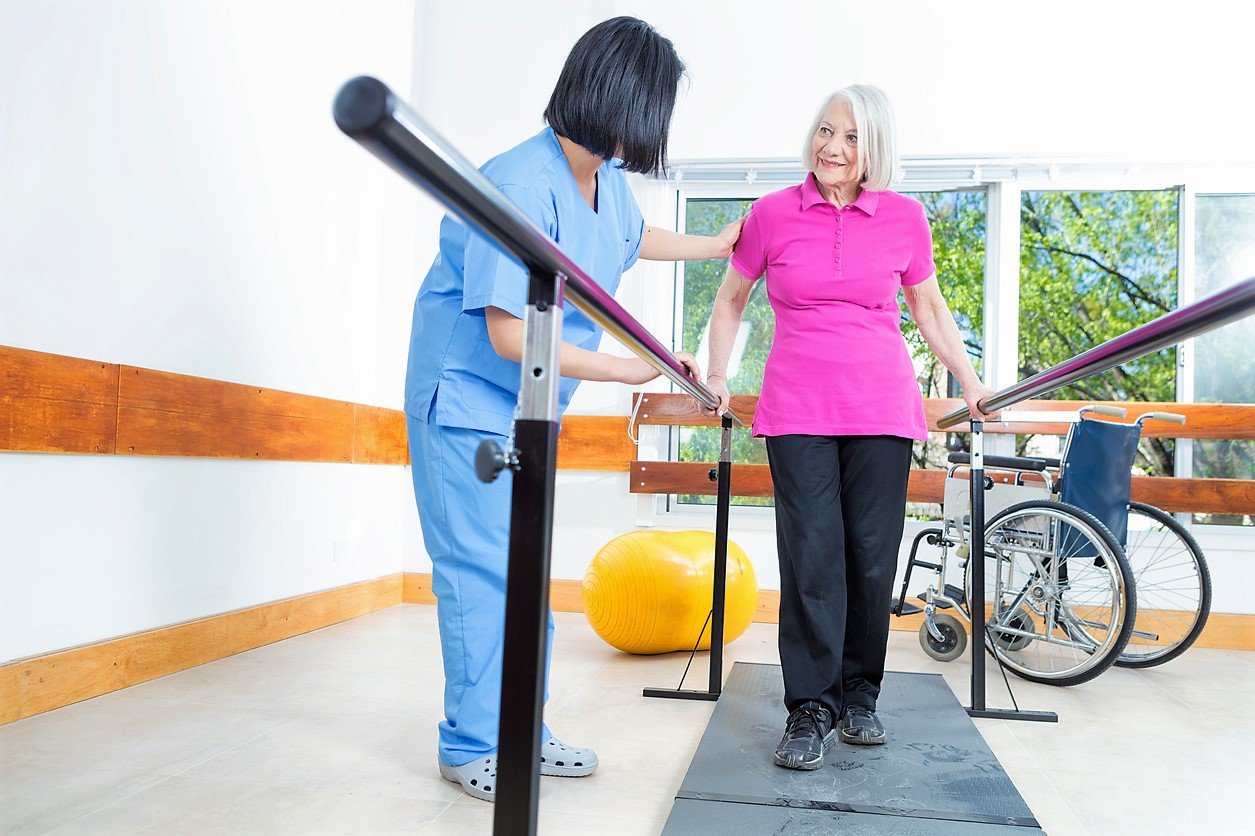Functional independence is one of the things needed for leading a comfortable existence. Loss of this freedom, consequently leading to a dependency on others, proves detrimental to one’s well-being and hampers the quality of life. This is particularly relevant in the context of seniors wherein the aging process poses several challenges to their lifestyle. Elders are more vulnerable to face functional decline and may need intensive healthcare support particularly after a surgery, injury or major ailment. Though several promising senior care options are available, Senior Rehabilitation is the apt solution to meet this requirement.
Senior Rehabilitation Programs are specifically designed for such situations to
- Improve the health of older people
- Allow them to retain their independence and
- Enable them to go back to their usual routines as quickly as possible
Rehabilitation facilities focus more on working with patients rather than home care options. There is a direct relation between rehabilitation and recovery-the more the time spent on rehabilitation tasks, the greater is the chance of recovery and the improvement in the health status of the patient happens faster.
Senior Rehabilitation may be inevitable in several circumstances as elders face physical ailments such as
- Fractures and immobility due to falls
- Orthopedic impairments
- Trauma
- Stroke
- Wounds and injury
- Cardiovascular ailments
- Neuro-muscular disorders
- Pulmonary malfunctions
- Injuries to the head/spinal cord
- Post-Surgery effects
Benefits of Senior Rehabilitation
- Focused attention to patient’s condition by providing the necessary tools for dealing with their prevailing conditions or disabilities.
- Rehabilitation services are delivered immediately without delay to ensure optimum improvement in the patient’s state.
- The procedures followed here are based on doctor’s recommendation and may be implemented as a follow-up treatment after hospital discharge.
- Tasks are done using a holistic approach to patient care by a multi-disciplinary team including doctors, dieticians, nurses, social workers, psychologists, therapists for speech, occupational therapy and physiotherapy.
- For cases of medical rehabilitation, a personalized plan is developed to cater to the specific functional state of the patient and dispensed by a dedicated team of professionals.
- The patient’s family is involved in the rehabilitation process by sharing the information on the resources and methodologies used and taking into consideration the patient’s preferences and desires.
- Recovery happens in a comfortable setting and location of the rehabilitation is tailored to the patient’s needs to facilitate faster healing.
- Duration is determined after carefully assessing various factors like the type of injury/disease, medical condition of patient and rate of progress in recovery.
- Provides a full spectrum of care by incorporating the latest rehabilitation equipment and programs and also helps patients in doing daily activities like bathing, dressing and grooming by giving them practice sessions.
- Physical rehabilitation can be administered at home, reducing strain on seniors and improving willingness to undertake rehabilitation. These services can be obtained from either rehab specialists directly or senior home healthcare services.

Some Forms of Senior Rehabilitation
- Fall Prevention after Balance Assessment – It is estimated that almost one in every three elders aged 65 or more experience accidental falls annually. Nearly 30% of this affected population needs medical intervention. Therefore rehabilitation services come into play for doing balance assessment and providing the relevant therapy for improving the patient’s balance and coordination skills. It is noteworthy that the long-term healthcare costs and the associated pain and suffering are substantially reduced by doing this.
- Stroke Rehabilitation – Typically, rehabilitation begins within a day or two after the stroke attack. Particularly, inpatients in the hospital need intensive rehabilitation efforts lasting for about three hours each day and scheduled atleast 6 days a week. Post-hospitalization stroke patients need aftercare rehabilitation too (minimum of three sessions per week). The duration of rehabilitation is determined based on the patient’s medical condition, the severity of stroke and response to treatment. Usually, it may last for a few weeks to months through some seniors may take years to recover.
- Cardiovascular Rehabilitation – This rehabilitation focuses on a coordinated therapy approach to improve the chances of recovery in heart patients. It aims to increase their energy levels so that their body immunity and heart gets stronger. The process also enables them to better manage their condition and learn healthier habits. Recovery time may last from a few weeks to months.
- Other types of Rehabilitation Therapy – Various forms of therapeutic intervention are also available for patients suffering from brain/spinal cord injury and mental disorders like Parkinson’s, Alzheimer’s and Dementia. That includes-
- Occupational Therapy that is specifically designed at aiding the seniors in performing their normal activities for personal hygiene, motor regulation, grooming, dressing and eating food.
- Speech therapy for restoring communication and interaction abilities in patients through verbal and non-verbal language.
- Physical Therapy which is given to regain muscular strength, flexibility, dexterity and coordination.
- Psychological Counseling to help patients cope up with their condition, boost mood levels, increase morale and deal with anxiety and stress.
Any or a combination of these therapies may be given as part of stroke or injury rehabilitation also.
In short, rehabilitation helps elders to get back to their feet as soon as possible after disease or injury. The more the time invested in it, the quicker and better are the chances of patient recuperation-that’s the promise of Senior Rehabilitation!
 Lifeyet News Lifeyet News
Lifeyet News Lifeyet News





